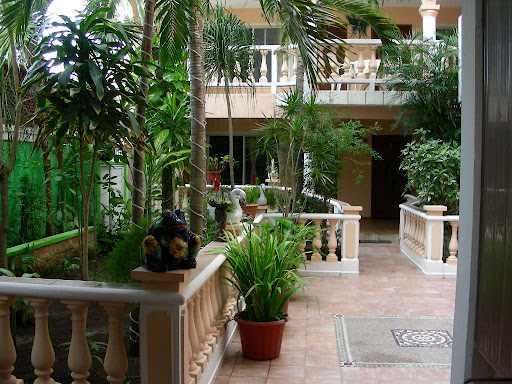Art Far from the Hamptons: Isla Mujeres, Mexico

A lot of people go to Florida in the winter, but Mexico, especially the Maya Riveria, is becoming popular as well. (When this critic first started going 15 years ago, it was simply known as the Yucatan.) It wasn’t fancy or posh, just the spectacular blue waters of the Caribbean. And art. Not fancy, posh, popular or even contemporary. Just the Mayan ruins of Tulum and Akumal, among others. A recent three-week trip to the area proved that the ruins remain permanent and archetypical while places like Cancun and even Isla Mujeres, a small nearby island, become more commercial where art and artists are few and far between.
Yet there is art. Consider this: in Cancun, at one high-end resort, the paintings and décor are strictly Americanized; no examples of Mexican furniture, crafts, tapestries or paintings featuring local scenes exist. The hotel’s architecture is another matter, where the buildings try and imitate Mayan design. At least there is recognition of Mexico’s great historical traditions.
According to this critic, however, this really isn’t art. True art is found in Isla Mujeres, where visual imagery is part of daily life: notably, murals decorating the local elementary school and a small hotel; abstract tattoos also decorating people’s bodies. But one display was most unusual, worn by a young man visiting his family but who lived in Spain, Julian Zaragoza. It pictured a young Muslim woman covered with a camera and various technological devices. The message: getting the message out about the Muslim cause. It was precise, striking and definitely political.
A local hotel in Isla Mujeres featured indigenous art celebrating nature that Mayan tradition values. Hotel Francis Arlene, a family-run business with colonial-looking architecture, is a simple but comfortable place with small, understated glass mosaics of herons in the lobby. A painting in one room replicated a Gauguin-like Tahitian scene. The courtyard, landscaped with palm trees by the owner’s son, Jerry Magana, was art as well, again suggesting the beauty of nature.
A restaurant in the center of town, Olivia, also had a hand-made courtyard, designed by its Israeli owners. It suggested an oasis of sorts, reminiscent of the Yucatan jungle before the area became developed.
Another hotel, Playa la Media Luna, also showed a penchant for nature with its curtain of shells gently swinging in the wind and the domination of thatched roofing incorporated into the exterior design. Wicker furniture on the patio and in the breakfast room also set the tone for natural materials. A striking Medusa-like head above the front desk, made of branches and roots, represented an archetypical figure that used natural material as well. A painting on the lobby ceiling was more exotic with colorful, festive butterflies and a tiger.
Nature is brought inside with these delightful examples.



